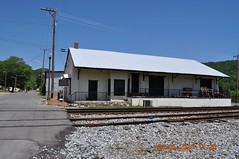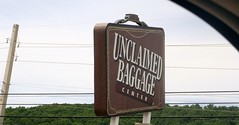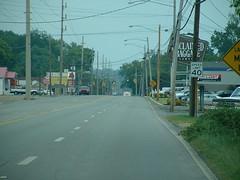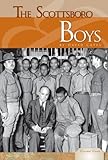With the rising level of automobile production and its corresponding worldwide stocks based on the rapid industrialisation in Asia, Africa and Latin America plus the rising demand in Eastern Europe, the proportion of textiles in a motor car is increasing in response to more stringent comfort and safety needs in industrialised countries like the USA, Japan and Western Europe.

Automobile textiles, which are non apparel textiles, are widely used in vehicles like cars, trains, buses, aircraft and marine vehicles. Hence, the term automobile textile means all type of textile components e.g. fibers, filaments, yarns and the fabric used in automobiles.
Scottsboro
Nearly two third of the automobile textiles are for interior trim, i.e. seat cover, carpets and roof and door liners. The rest is utilized to reinforce tyres, hoses, safety belts, air bags, etc.
It is projected that nearly 45 square meters of textile material is utilized in a car for interior trim (seating area, headlines, side panel, carpet and trunk). According to a survey, the percentage of textile in a motor car amounts to 2 per cent of the overall weight of a car. Apart from this, visible textile components, eliminating hidden components such as in tyres and composites, hoses and filters; amount to 10-11 kg per vehicle in absolute terms. Industrial textiles are largely utilized in vehicles and systems including cars, buses, trains, air crafts and marine vehicles. In automobile textile industry, four types of fabrics are used, namely:
. Air bag fabrics
. Fabric used as a basis for reduction in weight of body parts
. Tyre cord fabrics
. Automotive upholstery and other textile fabrics used inside the vehicle
The airbag and seat belts used as safety measures are one of the latest types of textiles in automobiles and have a potential market for technical textiles that has a considerable scope for growth and development. Because of government legislation and consumer interest, the applications have been extremely successful over the last ten to fifteen years.
In the last decade, airbags or inflatable restraints have received noteworthy significance as a safeguard for the driver and the passengers in case of an accident. Initially, the bags were made for head-on collision, but now, there are many other safety devices like side impact bags, knee bolsters, side curtain, etc, available for safety in any type of crash. Because frontal collisions are a main reason of accidental deaths, airbags are being presented as a standard product in vehicles by legislation, which has given the quick increment of airbags business in the last decade. NHTSA and HHS report that airbag systems have played an important role in saving thousands of lives since 1985. In 2002 alone, due to the airbag system a 20 per cent reduction in fatalities resulting from fatal collisions has been observed.
In 1999, there were 55 million vehicles with 81 million airbags. In 2004, the number of frontal airbag units was nearly 100 million and the number of side-impact airbags nearly 65 million. In the same year, nearly 23 per cent of the new vehicles in North America had side airbags for chest protection and 17 per cent had side airbags for head protection. By 2005, this has increased to 180 million airbags and 65 million vehicles.
Fabric application demand has increased to 325 million square meters in 2005, and 83 tons of fibre, mostly nylon has been used.
The world airbag market is estimated to rise from 66 million units in 1996 to over 200 million units in 2006, a compound annual growth rate of 12 per cent. Over this decade, Europe will put in 60 million units, Asia-Pacific 30 million units and North America 24 million units.
While North American and Western European markets are growing, considerable development is also seen in the international market. As new applications are developing for airbags, including rear seat bags, inflatable seat belts and an outside airbag system for pedestrians, new fabrics and combinations are being applied. The front and passenger bags have different requirements because of the distance from the occupant, but they both have rapid increment and deflation in a very short time span.
Rollover bags must remain inflated for five seconds. In addition to new uses, expected trends include lighter fabric for use with newer "cold inflators," blended with materials like fabric and film, new coating polymers (Silicone now dominates having replaced neoprene).
Growth of safety devices in the car interior
Increasing electronics and safety devices require more space in the interior together with new concepts for arrangement.
Worldwide market for PA airbag yarns
The fibre manufacturer Accordis Industrial Fibres BV, Arnhem/ Netherlands reported that the global market for PA airbag was 84,000 tons in 2005.
Airbags
Airbags were first introduced in the late 1960s, but it is only in the 1990s that their use increased amazingly and it is set to grow further. This validates the research and development still being made on design, deployment and base fabric material.
The prospects for the textile and making-up indus¬tries are huge in the area of airbag production. This is due to its large requirement particularly in view of the legislation, which is already imposed by many countries.
Around 1.42 meter2 of fabric is required to produce driver¬ side airbags on light trucks. This estimation gives the idea that the airbag market is of great importance for the use of technical textiles. Airbags are normally made by coated or uncoated fabrics of PA 6.6 yarns with lesser air permeability.
A fabric cushion is included as a part of textile ingredient for an airbag, which is folded into the center of the steering wheel (for the driver) or in the glove compartment (for the front seat passenger). Generally, the bag is woven by nylon 6, 6 filament yarns, which are in demand in huge quantities because of their high strength-to-weight ratio, favorable elongation, adequate thermal properties and relatively low cost of production. Other properties required are high tear strength, high anti-seam slippage, controlled air permeability and be capable for being folded into confined places for over ten years without deterioration.
Function
A triggering device sets-off explosive chemicals when it senses an accident above 35 km/h is about to occur. These chemicals hold back and cushion the car occupant from collision with harder objects. The fabric from which the bag is made must be competent for withstanding the strength of the propellant chemicals. More over, the hot gases must not penetrate the fabric and burn the skin of the car occupant.
For airbags to perform their protective function, each function in the system must work with reliability and predictability. In frontal airbag initiation, the cushion begins to deploy within 20 ms after collision and is fully set up in 50 ms. Within this period of time, the bag has to spread through the plastic cover, blown up and fill the space between the dashboard and occupant.
Material applications
Airbags are generally made from high tenacity multifilament nylon 6, 6 in yarn quality fineness from 210, 420 to 840 denier, although some polyester and even some nylon 6 is utilized. As Nylon 6 is softer, it is used to lessen skin abrasion. Airbag fabric is not dyed, but has to be scoured to eliminate impure substances, which could encourage mildew or other problems. Airbags are created in compact size, plain woven fabrics.
The amount of fabric required to make an airbag depends on its location in the car and the market it serves. The fabrics utilized to produce a driver's and a passenger's airbag are quiet different. Most drivers' side airbags are coated by using lower denier yarns that give strong and light-weight fabrics. The looser weave has been permitted by stronger nylon 6, 6 yarns that create fabrics with lighter weight, less stiffness and better packagabiIity.
The fabric which is used to produce passenger airbags is generally uncoated. These kinds of passenger bags are larger so they create lower gas pressures, have longer inflation times, and possess gas which is cooler. The constituent yarns are of relatively heavy denier. Normally, airbag fabrics are made by rapier weaving machines or air jet looms with electronic dobbies.
Airbag fabrics varieties
The earliest airbags were Neoprene coated and woven Nylon 6, 6, but later lighter and thinner silicone coated versions followed. Afterwards, though, uncoated fabrics have emerged. The majority of these fabrics are coated with an elastomeric material such as neoprene or silicone. The long lasting popularity of coated materials for airbags has been seen because of its capability to work as a heat shield and the comparative ease that design engineers can expect wider performance in their use.
Though, there are some intrinsic problems with coated airbags, which cover their large thickness, incapability to be folded into small spaces and inclination of decay over time. Coated fab¬rics are simple to cut and sew and the air porosity can be well managed.
The drawbacks linked with coated airbags and their subsequent substitution with uncoated materials has warranted significant developments from two sectors of the industry. The uncoated airbags can be recycled in a simple manner. The first development has come from the yarn and fabric producers, who have concurrently developed the performance of the fabrics. Their gas permeability has fallen under specific scrutiny since the way an uncoated fabric discharges gas and establishes the capability of an airbag to resist impact. The second development has gained from the inflator producers, who have started to substitute the original inflators, which release air, with devices that emit air like argon and helium. This is greatly helpful because these gases are equally as effective at lower temperatures and discharge less hot particles.
Finishing procedure of airbag fabrics
After weaving, the airbag fabric is scouring to reduce size. To gain accurate air permeability, the airbag fabric can be calendered. Apart from influencing the air permeability by weaving and finishing, accurate permeability control can be achieved by coating. When the airbag material has been finished, it is sewn together; the best practice is by using it with a laser.
Airbags are sewn with Nylon 6, 6, polyester, and Kevlar aramid yarns, the sewing patterns and densities being selected to maximize performance. When a bag is sewn it is folded inside its cover. Packing should permit for tethers connected to the bag to manage operation. Finally, a cover can be set up over the bag to safeguard it from abrasion.
Airbag sizes
Airbags are available in various sizes and configurations depending on the type of car and steering. Moreover, the driver's side airbag is smaller than the front passengers by about 65 liters capacity upwards.
Suppliers
In airbag systems, there are mainly five suppliers of the airbag module itself, representing 32 per cent of the value of the airbag system. The key airbag control unit has four suppliers representing 24 per cent of the value, and the seat belt portion of the system has two suppliers with a 31 per cent contribution. Yet, the remaining part with only 13 per cent of the value of the airbag system has over 40 suppliers.
Two years back INVISTA, formerly DuPont Textiles & Interiors, had expanded nylon 6, 6 fiber production capacity, totaling 7.5 kilotons (kt.) at two facilities; one in Qing Dao, China, and the second in Gloucester, UK.
A wide range of highly specialized polyamide 6.6 airbag yarns, Enka Nylon, are made by Polymide High Performance at its Obernburg (Germany) and Scottsboro (Alabama/USA) plants.
Zapata Corporation in December, 2005 announced that it completed the sale of all of its 4,162,394 shares of Safety Components International, Inc. to private equity investor Wilbur L. Ross, Jr. for nearly .2 million. Zapata's stake stands for nearly 77.3 per cent of Safety Components' total outstanding common stock. Safety Components is an independent producer of air bags and the company's fabrics are largely utilized for automobile safety air bags and in niche industrial and commercial applications. Safety Components headquartered in Greenville, South Carolina, has plants situated in North America, Europe, China and South Africa.
Takata is a manufacturer of automotive seatbelts. Takata started researching seatbelt technologies in 1952. After eight years of research and development Takata became the first safety company to offer seatbelts as standard equipment to the Japan market in 1960. In the early 1970's, Takata worked with NHTSA to satisfy new high speed crash test requirements and supplied the first energy absorbing seat belt system to pass a 30 mph crash test. Irvin Automotive is another company within the Takata Corporation. Irvin makes armrests, cargo covers, molded consoles, seat covers and sun visors.
Narricot Industries, LP, located in Southampton, Pennsylvania, is a producer of woven narrow fabrics in North America. With manufacturing facilities in Boykins and South Hill, Virginia, Narricot is the number one supplier of seatbelt webbing to the North American automotive industry.
Autoliv is a manufacturer of airbag, seatbelts and other automotive safety devices. Autoliv has nearly 80 wholly or partially owned manufacturing facilities in 30 vehicle-producing countries. Autoliv and its joint ventures and licensees make over 80 million seat belt systems annually.
Toray Industries, Inc, that makes nylon 6, 6 fiber and textile for use in automobile air bags, plans to start manufacturing base fabric for automotive airbags at its Czech textile subsidiary in January 2006. The company plans to invest in the necessary equipment to its subsidiary Toray Textiles Central Europe. The production output is projected at 600,000 meters in 2006 and 4 million meters in 2010. At present, Toray makes the fabric in Japan, Thailand and China mainly for airbags used in Japanese cars.
Performance tests and standards
Many individual tests carried out with airbag yarns and fabrics is said to number over 50. The ASTM, the SAE and the Automotive Occupant Res¬traint Council (AORC) have established various standards that express appropriate tests for airbags.
Seat belts
The seat belt is an energy absorbing device that is designed to keep the load imposed on a victim's body during a crash down to survivable limits. Basically, it is designed to offer non recoverable extension to decrease the deceleration forces that the body comes across in a crash. Non recoverable extension is significant to prevent the occupants from being restrained into their seats and sustaining whiplash injuries right away after a collision. To prevent more webbing from paying out after an accident, the automatic belt has a locking device known as inertia reel. An efficient seat belt will only permit its wearer to move forward a maximum of about 30 cm to avoid contact with any fixed parts of the car.
It is believed that the seat belts were invented concurrently in America as well as Sweden. The only difference was that the American belt was a strap to encircle the waist and the Swedish belt was a diagonal band made to defend the upper body. Now, a blend of the two designs is a most prevalent arrangement and is called the 3-point belt, which is secured by two fittings on the floor and a third on the sidewall or pillar. Racing drivers wear other patterns, particularly two shoulder straps and a lap belt. The earliest automotive seat belts were set up and were adjustable so that they could fit the wearer manually. The automatic belt superseded this pattern by providing the wearer more space to move.
Seat belts are available in multiple layers and are woven in narrow fabrics in twill or satin fabrication from high tenacity polyester yarns, generally 320 ends of 1100 dtex or 260 ends of 1670 dtex yarn. These structures permit highest yarn packing within a given area for highest strength and the trend is to utilize coarser yarns for good abrasion resistance. For ease they require to be softer and more flexible along the length, but rigidity is needed along the width to facilitate them to slide easily between buckles and retract smoothly into housings. Edges require being scuff resistant, but not disagreeably rigid and the fabric must be resistant to microorganisms. Nylon was utilized in some early seat belts, but due to of its higher UV degradation resistance; polyester is now widely used worldwide.
Performance standards
Normally, the performance standards require a seat belt to restrain a passenger weighing 90 kg involved in a collision at 50 km/h (about 30 mph) into a fixed object. Straight pull tensile strength should be at least 30 KN/50 mm. Other tests include accelerated ageing and in the made-up form, resistance to fastening and unfastening 10,000 times. The seat belt must be long lasting without any significant deterioration. In many cars, after ensuring the inclusion of the airbag, efforts have been made to link the function of the two devices (seat belt and airbag).
Conclusion
No doubt that the airbags help to save lives, but at times they can also be a source of serious injury. The search for a uniform smart airbag, which can perceive the size of the passenger or whether the seat is empty and react in that manner, is in progress. Such a 'smart' airbag will incorporate sensors to judge the weight, size and location of the car passengers and hence deploy more appropriately.
In addition, incorporated safety devices associated with the seat belt along with other safety items, particularly for child passengers, are under development. The trend towards uncoated fabrics is anticipated to continue and so is the improved trend towards more airbags per car and fuII-size bags. There is also a technical challenge of producing the bag by using more rational techniques and related specifications made by the automotive industry.
Textiles Applications in Automotive Industry














